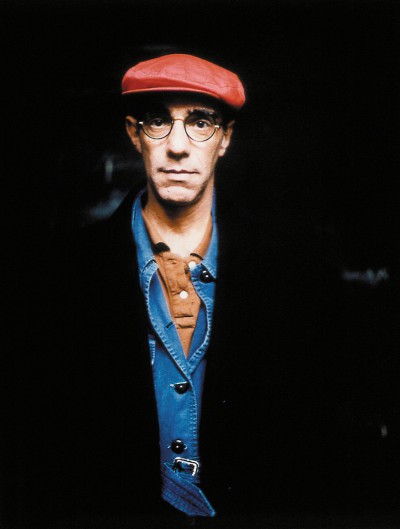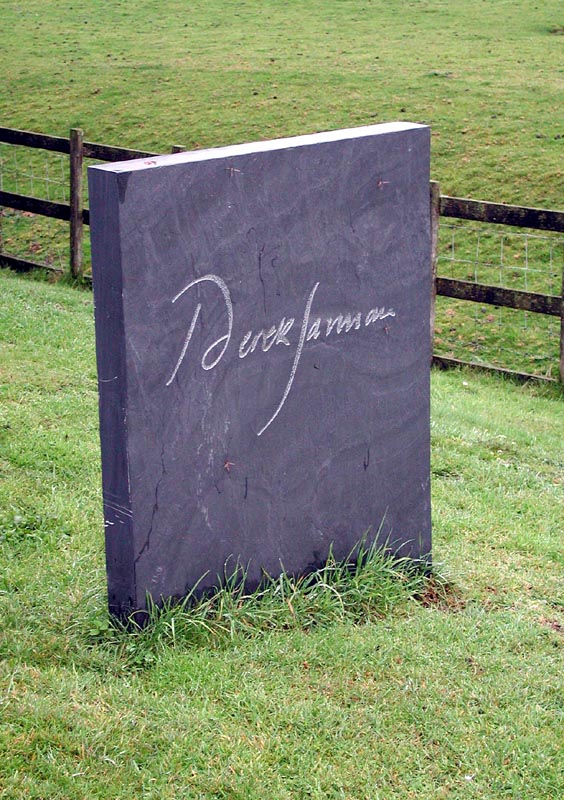Derek Jarman (Michael Derek Elworthy Jarman)

Jarman’s first films were experimental super 8 mm shorts, a form he never entirely abandoned, and later developed further in his films Imagining October (1984), The Angelic Conversation (1985), The Last of England (1987) and The Garden (1990) as a parallel to his narrative work. The Garden was entered into the 17th Moscow International Film Festival.[9] The Angelic Conversation featured Toby Mott and other members of the Radical artist collective The Grey Organisation. Jarman first became known as a stage designer, getting his break in the film industry as production designer for Ken Russell’s The Devils (1970). He later made his debut in “overground” narrative filmmaking with Sebastiane (1976), about the martyrdom of St. Sebastian. This was an early British film featuring positive images of gay sexuality, and its dialogue was entirely in Latin. He followed this with Jubilee (shot 1977, released 1978), in which Queen Elizabeth I of England is seen to be transported forward in time to a desolate and brutal wasteland ruled by her twentieth century namesake. Jubilee was arguably ‘Britain’s only decent punk film’, and among its cast featured punk groups and figures such as Wayne County of Wayne County & the Electric Chairs, Jordan, Toyah Willcox, and Adam and the Ants. This was followed in 1979 by an unconventional adaptation of Shakespeare’s The Tempest. Praised by several Shakespeare scholars, but dismissed by some traditionalist critics, the film contains a considerable amount of nudity (mostly male, but also some female, including a scene in which Caliban’s mother Sycorax breast-feeds her son), some unconventional casting (Toyah Willcox’s Miranda hardly suggests innocent purity) and an unusual setting (a crumbling mansion as opposed to an island).
During the 1980s Jarman was a leading campaigner against Clause 28, which sought to ban the “promotion” of homosexuality in schools. He also worked to raise awareness of AIDS. His artistic practice in the early 1980s reflected these commitments, especially in The Angelic Conversation (1985), a film in which the imagery is accompanied by a voice (that of Dame Judi Dench) reciting Shakespeare’s sonnets. Jarman spent seven years making experimental super 8 mm films and attempting to raise money for Caravaggio (he later claimed to have rewritten the script seventeen times during this period). Released in 1986, Caravaggio attracted a comparatively wide audience (and is still, barring the cult hit Jubilee, probably Jarman’s most widely known work). This is partly due to the involvement, for the first time, of the British television company Channel 4 in funding and distribution. Funded by the BFI and produced by film theorist Colin MacCabe, Caravaggio became Jarman’s most famous film, and marked the beginning of a new phase in Jarman’s filmmaking career: from now on all his films would be partly funded by television companies, often receiving their most prominent exhibition in TV screenings. Caravaggio also saw Jarman work with actress Tilda Swinton for the first time. Overt depictions of homosexual love, narrative ambiguity, and the live representations of Caravaggio’s most famous paintings are all prominent features in the film. The conclusion of Caravaggio also marked the beginning of a temporary abandonment of traditional narrative in Jarman’s films. Frustrated by the formality of 35 mm film production, and the institutional dependence and resultant prolonged inactivity associated with it (which had already cost him seven years with Caravaggio, as well as derailing several long-term projects), Jarman returned to and expanded the super 8 mm-based form he had previously worked in on Imagining October and The Angelic Conversation. Caravaggio was entered into the 36th Berlin International Film Festival where it won the Silver Bear for an outstanding single achievement.
The first film to result from this new semi-narrative phase, The Last of England told the death of a country, ravaged by its own internal decay and the economic restructuring of Thatcher’s government. “Wrenchingly beautiful…the film is one of the few commanding works of personal cinema in the late 80’s – a call to open our eyes to a world violated by greed and repression, to see what irrevocable damage has been wrought on city, countryside and soul, how our skies, our bodies, have turned poisonous”, wrote a Village Voice critic. In 1989, Jarman’s film War Requiem brought Laurence Olivier out of retirement for what would be Olivier’s last screen performance. During the making of his film The Garden, Jarman became seriously ill. Although he recovered sufficiently to complete the work, he never attempted anything on a comparable scale afterwards, returning to a more pared-down form for his concluding narrative films, Edward II (perhaps his most politically outspoken work, informed by his Queer activism) and the Brechtian Wittgenstein, a delicate tragicomedy based on the life of the philosopher Ludwig Wittgenstein. Jarman made a side income by directing music videos for various artists including Marianne Faithfull, The Smiths and the Pet Shop Boys. By the time of his 1993 film Blue, Jarman was losing his sight and dying of AIDS-related complications. Blue consists of a single shot of saturated blue colour filling the screen, as background to a soundtrack composed by Simon Fisher Turner, and featuring original music by Coil and other artists, in which Jarman describes his life and vision. When it was shown on British television, Channel 4 carried the image whilst the soundtrack was broadcast simultaneously on BBC Radio 3. His final testament as a film-maker was the film Glitterbug made for the Arena slot on BBC Two, and broadcast shortly after Jarman’s death.
Jarman was born in Northwood, Middlesex, England. the son of Elizabeth Evelyn (née Puttock) and Lancelot Elworthy Jarman. His father was a military officer, born in New Zealand. He boarded at Canford School in Dorset, and from 1960 studied at King’s College London. This was followed by four years at the Slade School of Fine Art, University College London (UCL), starting in 1963. He had a studio at Butler’s Wharf, London, in the 1970s. Jarman was outspoken about homosexuality, his public fight for gay rights, and his personal struggle with AIDS. On 22 December 1986, Jarman was diagnosed as HIV positive and discussed his condition in public. His illness prompted him to move to Prospect Cottage, Dungeness in Kent, near the nuclear power station. In 1994, he died of an AIDS-related illness in London, aged 52. He was an atheist. Jarman was buried in the graveyard at St. Clements Church, Old Romney, Kent.
Born
- January, 31, 1942
- United Kingdom
- Northwood, London, England
Died
- February, 19, 1994
- United Kingdom
- London, England
Cause of Death
- AIDS related illness
Cemetery
- St Clement Churchyard
- Kent, England
- United Kingdom



